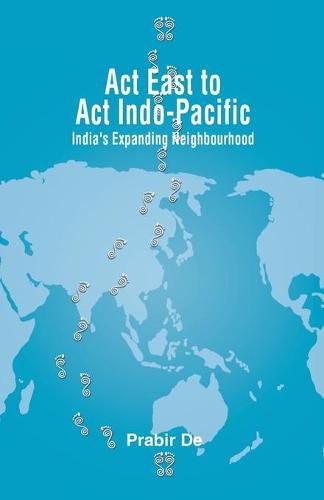Readings Newsletter
Become a Readings Member to make your shopping experience even easier.
Sign in or sign up for free!
You’re not far away from qualifying for FREE standard shipping within Australia
You’ve qualified for FREE standard shipping within Australia
The cart is loading…






This title is printed to order. This book may have been self-published. If so, we cannot guarantee the quality of the content. In the main most books will have gone through the editing process however some may not. We therefore suggest that you be aware of this before ordering this book. If in doubt check either the author or publisher’s details as we are unable to accept any returns unless they are faulty. Please contact us if you have any questions.
India is known as a leading voice in international affairs. India’s economic size, vast and growing market, democratic institutions, access to ocean and foundation of science largely explain why India continues to play an important role in global and regional affairs. India is the only country in Asia having the heft to counterbalance China and thus welcomed by many countries in Asia and the Pacific. India has embarked on a period of radical changes in its foreign and economic policies. Faced with a major slowdown of India’s trade with Southeast and East Asia in 2014-15, the government responded by initiating far-reaching Act East Policy (AEP) aimed at greater economic integration with South, Southeast and East Asian nations. Started with a fresh vigour in 2014, AEP has gained a new momentum while acting on the east. The Act ‘East’ is now getting transformed into Act ‘Indo-Pacific’. This book presents short essays written by the author on several key aspects of India’s economic relations and the challenges faced by India in the post-AEP period. Ten broad themes are analysed in this book: BBIN, BIMSTEC, SAARC, ASEAN, MGC, Act East - North East, BCIM, BRI, Act Far East and Indo-Pacific. This volume highlights what, in author’s best judgement, should be the direction for India’s expanding neighbourhood. It is an economist’s insight and field experience based analysis that offers guidelines for international cooperation. This volume is an invaluable companion for the policymakers, academia, students of international relations, diplomats and the general readership as well. India’s foreign policy started attracting renewed global attention since the beginning of the economic reforms in 1991 which led to the gradual opening of the Indian economy. India’s trade has expanded manifold and today contributes over 40 per cent of its GDP, as compared about 3 per cent before. In PPP terms, India is the world’s one of the top five largest economies. Clearly, the world expects India to play a larger role, commensurate with its size and growing power. In rising protectionism worldwide, countries, particularly developing and LDCs are looking towards a greater regional cooperation.
$9.00 standard shipping within Australia
FREE standard shipping within Australia for orders over $100.00
Express & International shipping calculated at checkout
This title is printed to order. This book may have been self-published. If so, we cannot guarantee the quality of the content. In the main most books will have gone through the editing process however some may not. We therefore suggest that you be aware of this before ordering this book. If in doubt check either the author or publisher’s details as we are unable to accept any returns unless they are faulty. Please contact us if you have any questions.
India is known as a leading voice in international affairs. India’s economic size, vast and growing market, democratic institutions, access to ocean and foundation of science largely explain why India continues to play an important role in global and regional affairs. India is the only country in Asia having the heft to counterbalance China and thus welcomed by many countries in Asia and the Pacific. India has embarked on a period of radical changes in its foreign and economic policies. Faced with a major slowdown of India’s trade with Southeast and East Asia in 2014-15, the government responded by initiating far-reaching Act East Policy (AEP) aimed at greater economic integration with South, Southeast and East Asian nations. Started with a fresh vigour in 2014, AEP has gained a new momentum while acting on the east. The Act ‘East’ is now getting transformed into Act ‘Indo-Pacific’. This book presents short essays written by the author on several key aspects of India’s economic relations and the challenges faced by India in the post-AEP period. Ten broad themes are analysed in this book: BBIN, BIMSTEC, SAARC, ASEAN, MGC, Act East - North East, BCIM, BRI, Act Far East and Indo-Pacific. This volume highlights what, in author’s best judgement, should be the direction for India’s expanding neighbourhood. It is an economist’s insight and field experience based analysis that offers guidelines for international cooperation. This volume is an invaluable companion for the policymakers, academia, students of international relations, diplomats and the general readership as well. India’s foreign policy started attracting renewed global attention since the beginning of the economic reforms in 1991 which led to the gradual opening of the Indian economy. India’s trade has expanded manifold and today contributes over 40 per cent of its GDP, as compared about 3 per cent before. In PPP terms, India is the world’s one of the top five largest economies. Clearly, the world expects India to play a larger role, commensurate with its size and growing power. In rising protectionism worldwide, countries, particularly developing and LDCs are looking towards a greater regional cooperation.